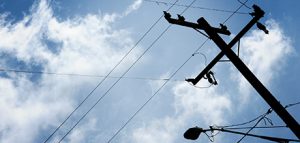Power poles and hardwood timbers for homes and infrastructure will be the focus of a small-scale selective timber harvesting operation set to commence in fire-affected parts of Mogo and South Brooman State Forests. Source: Timberbiz
Forestry Corporation of NSW’s Senior Planning Manager Dean Kearney said that specific conditions had been developed by a team of scientific experts to allow some fire-affected timber to be harvested from a small proportion of State forests that are designated for timber production, while leaving unburnt areas untouched.
“Timber is an essential renewable resource and will be even more important over the coming months as communities begin to rebuild homes and critical infrastructure damaged or destroyed by fires,” Mr Kearney said.
“Many of the State forests that are managed to continually produce and regrow these timber products have been impacted by fire this year, with up to 80 per cent of the State forests on the south coast that are managed for timber production affected by recent fires.
“The Environment Protection Authority (EPA), with the input of scientific experts, has provided Forestry Corporation with site-specific conditions for selective timber harvesting operations in designated parts of Mogo and South Brooman State Forests. These areas were previously set aside for timber production this year but have now been impacted by fire.
“Fire-affected timber has the same structural properties as unburnt timber and is suitable for processing into structural timber products that will be key to rebuilding operations, such as power poles, bridges, girders, flooring and decking.
“Strictly managed selective timber harvesting will help prevent the loss of some high-quality timber damaged by fire, including material that will be in high demand for rebuilding, while ensuring the right protections are in place for key environmental values, particularly wildlife habitat, as these forests begin regenerating.
“The harvesting conditions augment the already strict ruleset in place for forest operations and include requirements to leave all unburnt forest untouched and establish even more stringent conditions to protect water quality, hollow-bearing trees and wildlife habitat.
“Selective harvesting in fire-affected forests will look very different from the salvage harvesting that is carried out in pine plantations or in other states and will only take place in a small proportion of State forests that are already designated for timber production.
“Timber harvesting takes place in less than one per cent of State forests each year and all areas are fully regrown.
“Timber is the most renewable building product available and sustainably-managed forests are a key part of the climate solution. Taking into account the energy required to transform raw materials into building products and the fact that timber stores carbon for the whole of the product’s life, timber has a much smaller carbon footprint than other popular building materials like steel or concrete.
“And unlike many other building products, every time a tree is harvested, a tree regenerates in its place, making timber a sustainable, renewable resource for future generations.”








